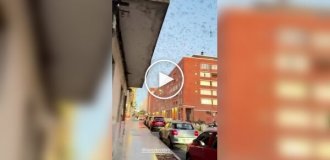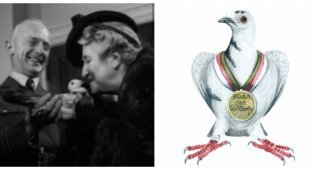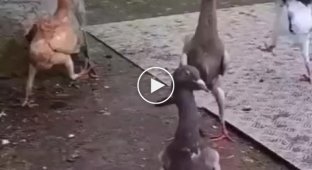French Troops Are the Last Army in Europe to Use Homing Pigeons (6 Photos)
Homing pigeon units also exist in China and are rumored to still be in use today. 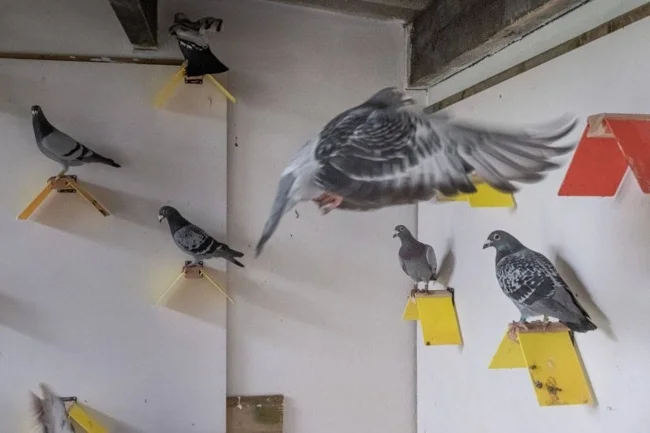
The French army was the last army in Europe to train homing pigeons, as they did during the First and Second World Wars, when these birds were the main means of communication on the battlefield. Pigeons are also trained in China, where they are called the "pigeon reserve army".
Pigeon post was the only reliable means of communication on the battlefield in the early 20th century. Thus, in June 1916, the bloodiest battle of the First World War broke out near Verdun. French and German soldiers had been fighting for every square meter for four months. And when the Germans finally managed to surround the strategically important military facility of Fort-de-Vaux and cut off all communication channels, it was a pigeon named Vaillant who brought news of the serious situation on the battlefield. He flew in wounded, delivered a message with the words: "This is my last pigeon." Although the fortress fell to the Germans, hundreds of soldiers were evacuated, and the heroic bird was awarded the Military Cross for bravery in battle. 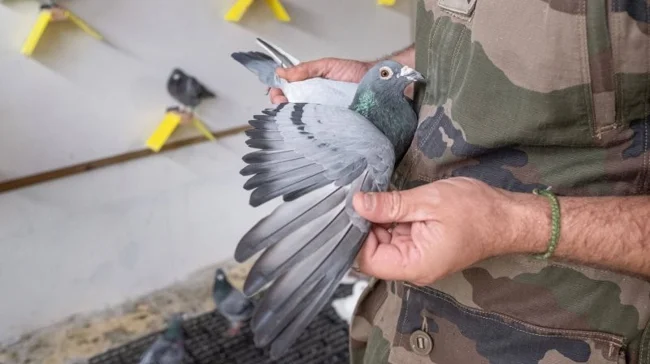
Pigeons are currently being trained in the Mont-Valérien fortress in Suresnes. This historic military site, just a short train ride from Paris, is home to more than 150 of the French army’s war pigeons. France, which prides itself on having one of the most modern armies in Europe, is the last country on the continent to still have homing pigeons.
Marshal de Logis Sylvain’s grandfather bred racing pigeons. His grandson is now responsible for keeping the tradition alive in the French army. The birds are given access to 26 hectares of green space and six dovecotes overlooking the capital and the Eiffel Tower for excursions. “There are worse places to work,” says Sylvain, smiling with satisfaction. The sergeant is not allowed to reveal his full name. France has been trying to protect its military and police personnel from attacks since the 2015 terrorist attacks.
The 43-year-old initially joined the army as a drone operator, but in 2014 he finally joined the French army's 8th Signal Regiment. It controls the army's communications and information systems and ensures that messages, information and orders are transmitted quickly and securely. The Mont-Valérien pigeons officially belong to the regiment, but Sylvain is mainly responsible for looking after them. 
How Homing Pigeons Are Trained
"We start with short training flights on the site, then we move further and further away from the dovecote," explains Sylvain. Depending on their training, the birds are released individually or in groups and have to find their way home. In this way, the young birds gradually develop the necessary muscles and gain experience in flying.
The sergeant points to the adult, but slightly thinner birds in the attic. At first glance, they are no different from the pigeons that gather in their thousands in every big city and usually have a bad reputation. But these birds are different, says Sylvain: "They are sprinters and can reach a maximum speed of 120 kilometers per hour over a distance of up to 100 kilometers." 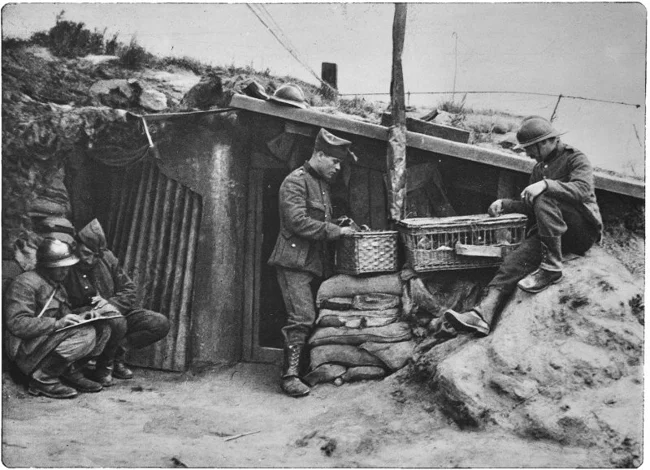
Their stronger colleagues excel in endurance and can easily cover distances of 1,000 kilometers. However, the record is much higher: in 1931, a pigeon flew from Ho Chi Minh City in Vietnam to Arras in France, covering 11,590 kilometers in 24 days.
Pigeons - a reliable way to convey messages
The fact that the bird can withstand wind and bad weather day and night shows how hardy and persistent these animals are and how unerringly they find their way home. Their home is always the place where they were born and fed, which the animals find, even if it is mobile, such as a mobile dovecote.
However, researchers still cannot understand why pigeons' ability to navigate is so unusual. It has been proven that pigeons navigate using optical landmarks, the position of the Sun and the Earth's magnetic field. However, it remains unclear how the animals determine their exact position when they are abandoned in a completely unfamiliar place.
Even in ancient times, humans used pigeons to exchange information. Their military use peaked during World War I, with some 60,000 birds used as messengers on the battlefield, of which more than 30,000 were used by the French military alone. 
During World War II, the British supported the French Resistance with almost 17,000 pigeons, which were dropped by parachute or smuggled into France in coat pockets, backpacks and baskets to relay information to the Allies. Hundreds of pigeons accompanied the Allied landings in Normandy to carry important messages across enemy lines without being noticed and, above all, without being intercepted. Among other things, Gustav the pigeon became famous for bringing news of the successful landing of the Allied troops in England on D-Day. The pneumatic tube on Gustav's leg contained a message from a Reuters correspondent who witnessed the landing in Normandy.
Experiments where biological drones fail
The messages were written on very thin paper. Pigeons can only carry about 400 grams without problems; heavier loads impair their ability to fly. However, during and after World War II, France, Germany and the United States experimented with attaching small cameras to pigeons for aerial reconnaissance. The idea did not gain military support because the animals reliably head for one specific destination: their home dovecote. However, footage from pigeon cameras in the fortress museum is reminiscent of attempts to use the birds as biological drones.
Mont Valérien is home to memorabilia from Switzerland, such as transport baskets and containers for valuable messages. That country's army dismantled its military dovecotes in 1994 and discharged about 30,000 feathered soldiers. The decision sparked debate across the country. There was even an initiative to enshrine protection for homing pigeons in the constitution, but to no avail. 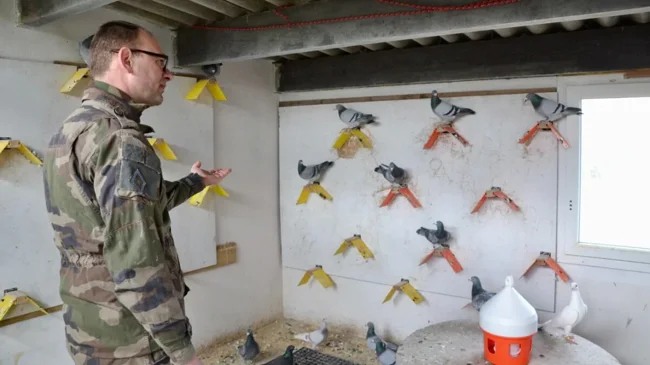
In the late 1960s, France decided to exempt pigeons from active military service, but the tradition of breeding racing pigeons was to be preserved. Also to further honor the birds' historical contributions. Today, Sylvain keeps his birds primarily in shape for competitions, commemorative events, and beauty contests that take place across the country. Although they will still be operational when "all the army's communications systems fail at the same time," Sylvain says. Modern technology has made feathered soldiers obsolete - at least in Europe.
China uses homing pigeons
The military utility of birds came into the spotlight earlier this year when India released a suspected Chinese pigeon that had been held captive by Mumbai police for months. The bird was suspected of being a spy. What has caused laughter around the world is not so far-fetched.
Back in 2010, China announced that it would create a "pigeon reserve army" that would support the People's Liberation Army's (PLA) traditional communications infrastructure in the event of war if modern technology failed. The Defense Ministry explained at the time that military pigeons would also be used for "special operations." More than 10,000 feathered soldiers are undergoing special training for this purpose at a special PLA unit in Chengdu.
The modernization in China has alarmed pigeon fanciers in the West. Fears of losing communications have led to calls for the reconstruction and expansion of new military pigeon units. In France, Jean-Pierre Decool, a senator in the French parliament and a pigeon fancier, addressed the Ministry of Defense several years ago and called for a massive increase in the number of military birds.
The ministry cited the large number of modern independent communication systems in the French army. However, Decool assured that if there was a real need for racing pigeons, the government would count on the help of pigeon fanciers in the country.




